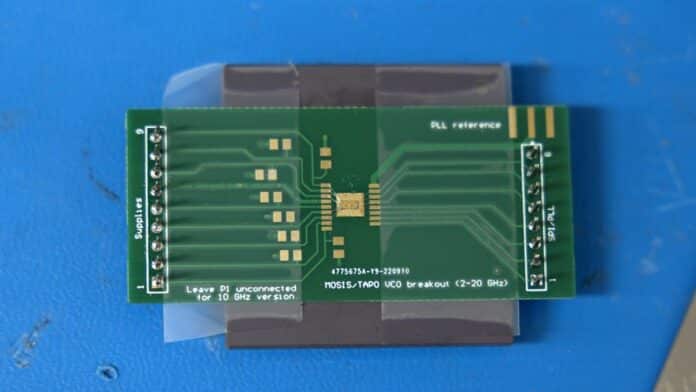As our data connectivity needs grow, efficient communication through beamforming arrays becomes crucial. However, using delay elements in these arrays poses challenges such as limiting size, channel capacity, power efficiency, and adequate radiation power.
While passive phase shifters do not consume DC power, they have limitations like narrow bandwidth, poor phase resolution, and low power-handling capacity. They also cause beam squint, where different frequency components experience delays, blurring signals, and reduced resolution.
True time delay (TTD) elements were introduced to address these issues. While they offer a solution with broad bandwidth, they involve transmission lines at the scale of wavelengths, making them inefficient for modern semiconductor processes due to their size.
Cornell researchers have developed a semiconductor chip that adds a necessary time delay so signals sent across multiple arrays can align at a single point in space without disintegrating. The approach will enable ever-smaller devices to operate at the higher frequencies needed for future 6G communication technology.
Senior author Alyssa Apsel, the IBM Professor of Engineering and director of electrical and computer engineering at Cornell Engineering, said, “Every frequency in the communication band goes through different time delays. The problem we’re addressing is decades old – economically transmitting high-bandwidth data so signals of all frequencies line up at the right place and time.”
Senior author Alyssa Apsel, the IBM Professor of Engineering and director of electrical and computer engineering at Cornell Engineering, said, “It’s not just building something with enough delay, it’s building something with enough delay where you still have a signal at the end. The trick is that we could do it without enormous loss.”
Previously, time delay was achieved using phase-shifting circuits. Still, they had limitations, especially for wideband signals where different frequencies could get out of sync, causing blurring known as “beam squint.” Making time delays small enough to fit into smartphones was a big challenge.
Researchers designed a new chip using complementary metal-oxide-semiconductor (CMOS) technology to tackle this. This chip could tune time delays across a wide bandwidth of 14 GHz with high precision.
Instead of using long wires for delay, they devised a clever method. They created 3D reflectors that bounced signals off them to cause delays. These reflectors were linked together to form a “tunable transmission line,” allowing for flexible and precise time delays.
The new integrated circuit is quite impressive—it’s smaller than phase shifters yet significantly boosts channel capacity, almost doubling the data rate of conventional wireless arrays. This means it can deliver data faster to cellphone users, offering speedier service.
Journal Reference:
- Govind, B., Tapen, T. & Apsel, A. Ultra-compact quasi-true time delay for boosting wireless channel capacity. Nature 627, 88–94 (2024). DOI: 1038/s41586-024-07075-y
